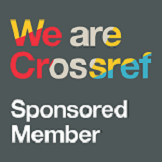The Effect of Mirror Therapy on Exterm Muscle Strength in Non-Hemorrhagic Stroke Patients Based on Self Care Theory
DOI:
https://doi.org/10.30994/jnp.v8i3.661Keywords:
mirror therapy, self care, strokeAbstract
Background: Non-hemorrhagic strokes result in neuromuscular disorders with reduced activity and weakness in joint movement and even disability. This condition receives treatment at the hospital in the form of educational therapy, diet, medication and ROM (active and passive).
Purpose: The aim of the research was to determine the effect of Mirror Therapy on extremity muscle strength in non-hemorrhagic stroke patients based on self-care theory.
Methods: Quasi experiment research design with a pretest posttest approach with control group design. The population of all non-hemorrhagic stroke patients with a sample size of 40 people, divided into 2 groups, namely the control group and the intervention group, was selected using a purposive sampling technique. The instruments used in this research include respondent characteristics, MMT (Manual Muscle Testing) observation sheets and Mirror Therapy SOP. Data analysis used the Mann Whitney U-test with a significance value of P value < 0.05.
Results: The results of the study showed that the average muscle strength score in the Mirror Therapy intervention group was 1.55 before and after 2.65, while in the control group with standard hospital treatment before 1,40 and after 1.95. The Wilcoxon Test results show P value = 0.000 in the intervention group and P value = 0.000 in the control group, meaning there is an increase in extremity muscle strength in the intervention and control groups. Based on the Mann Whitney test, it shows P value = 0.013, meaning there is no differences in Mirror Therapy on extremity muscle strength in non-hemorrhagic stroke patients.
Conclusion: The application of Mirror Therapy affects the level of extremity muscle strength in non-haemorrhagic stroke patients. Nurses are expected to be able to apply Mirror Therapy to apply it in nursing practice.
Downloads
References
Ahmad Zaini Arif, Atika Jatimi, Adimah, F. I. (2024). Mirror Therapy Meningkatkan Kekuatan Otot Paisen Pasca Stroke Non Hemoragik dengan Hemiparase.
Appulembang, I., & Sudarta, I. M. (2021). Pengaruh Latihan Range of Motion Pada Ekstremitas Atas Dengan Bola Karet Terhadap Kekuatan Otot Pasien Stroke RSUD Dr. H. Soewondo Kendal (Studi Literature). Jurnal Berita Kesehatan, XV(1), 143–152.
Basyir, I. F., Nurkhalifah, N., & Linggabudi, I. G. B. W. (2021). Gambaran Radiologis pada Bidang Neurologis Stroke. Syntax Fusion: Jurnal Nasional Indonesia, 1(10), 588–603.
Hasanah, M., Gofir, A., Setyopranoto, I., UIN Sunan Kalijaga, K., Neurologi, D., Kedokteran, F., & Gadjah Mada, U. (2019). Neurorehabilitasi motorik pasca stroke. Berkala NeuroSains, 18(2), 51–56. https://journal.ugm.ac.id/bns/article/view/54998.
Herman, A., Thalib, S., & Dimara, H. (2023). Efektivitas Mirror Therapy Terhadap Peningkatan Kekuatan Otot Pada Pasien Post Stroke: Literatur Review. Jurnal Ilmu Keperawatan Medikal Bedah, 4(1), 11–15. https://doi.org/10.32584/jikmb.v4i1.713.
Indiartinie, A. T., Setiyowati, E., Septianingrum, Y., & Muhith, A. (2023). The Importance of Discharge Planning in Stroke Patients : Literature Review. Journal Of Nursing Practice, 6(2), 130–136.
Kasma, Safei, I., Zulfahmidah, Rachman, M. E., & Nasrudin Andi Mappaware. (2022). Pengaruh Kepatuhan Menjalani Rehabilitasi terhadap Peningkatan Kekuatan Otot Pada Pasien Pasca Stroke. Fakumi Medical Journal: Jurnal Mahasiswa Kedokteran, 1(3), 216–223. https://doi.org/10.33096/fmj.v1i3.68.
Kemenkes RI. (2018). Hasil Riset Kesehatan Dasar Tahun 2018. Kementrian Kesehatan RI, 53(9), 1689–1699.
Lestari, E. N. I. (2021). Program studi s1 keperawatan universitas muhammadiyah pringsewu lampung 2021.
Mardiana, S. S., Yulisetyaningrum, & Wijayanti, A. (2021). Efektifitas ROM Cylindrical grip terhadap Peningkatan Kekuatan Otot Tangan pada Pasien Stroke Non Hemoragik. Jurnal Ilmu Keperawatan Dan Kebidanan Vol.12, 12(1), 81–90.
Robinson, D. P., Pansori, H. M., & Hermiati, D. (2023). 287-295++maret+koloni+23+(Autosaved) (1). 2(1), 287–295.
Setiawan, P. A. (2021). Diagnosis dan Tatalaksana Stroke Hemoragik. JMH: Jurnal Medika Hutama, 03(01), 1660–1665.
Setiyawan, S., Nurlely, P. S., & Harti, A. S. (2019). Pengaruh Mirror Therapy Terhadap Kekuatan Otot Ekstremitas Pada Pasien Stroke Di RSUD dr. MOEWARDI. JKM (Jurnal Kesehatan Masyarakat) Cendekia Utama, 6(2), 49. https://doi.org/10.31596/jkm.v6i2.296.
Sherina, N., Ramdan, D., & Hidayat, N. (2022). Assistancy of Medical Surgical Nursing for Patients with Nervous System Disorders (Hemorrhagic Stroke) in Flamboyant Room, General Hospital of Banjar. Kolaborasi Jurnal Pengabdian Masyarakat, 2(2), 175–197.
World Health Organization. (2016). Tabacco & Stroke. 6, 33–36.
Zuliawati, Rosaulina, M., & Tane, R. (2023). The Effect of Mirror Therapy on Muscle Strength in Non Hemorrhagic Stroke Patients in Sembiring General Hospital. Jurnal Keperawatan Dan Fisioterapi (Jkf), 5(2), 381–388. https://doi.org/10.35451/jkf.v5i2.1402.
Downloads
Published
How to Cite
Issue
Section
License
Copyright (c) 2025 Journal Of Nursing Practice

This work is licensed under a Creative Commons Attribution-NonCommercial-ShareAlike 4.0 International License.

This work is licensed under a Creative Commons Attribution-NonCommercial-ShareAlike 4.0 International License.






















